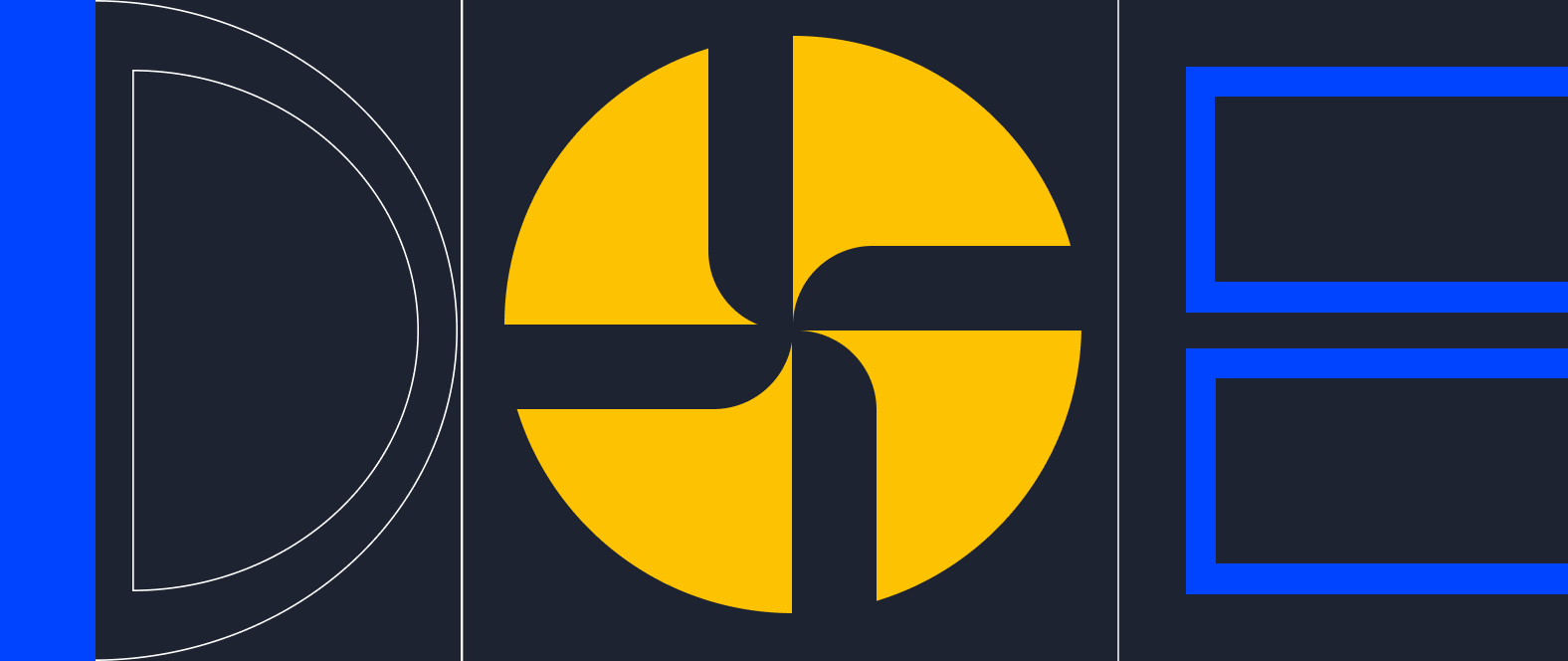Best IDE and code editors for developers

Let’s choose an Integrated development environment (IDE) and a code editor for development and testing.
This article contains recommendations only; to learn more about all the IDEs, please visit their official sites.
What is an IDE?
An IDE (Integrated Development Environment) is a software combining application development and testing features into a single graphical interface. Usually an IDE consists of:
- text code editor;
- compiler or interpreter, a tool that translates a text into a set of machine codes;
- tools for coding automation;
- debugger that detects bugs and helps to get rid of them to ensure that the code works properly.
Some IDEs also support additional plugins, and by installing them you can get even more development features.
What to consider when choosing an IDE?
Before choosing an IDE, pay attention to the following:
- What programming languages will you use? There is software that works with a single language, but you can also find many multilingual IDEs.
- Do you need the collaborative development feature? If you work with a team, you should choose an IDEs which allows you to add participants. It is often available in paid software.
- What OS will you be using? Check if an IDE supports the required OS, but it's better to choose cross-platform solutions.
- What additional features do you need? Set the project goals and choose an IDE by the features you need to reach these goals.
- What's the cost? It's quite clear, if you are not willing to pay, or cannot afford it at the time, then look for free text code editors. If you need more advanced tools, they can be found in paid software subscriptions.
What IDEs and text editors should you look at?
Microsoft Visual Studio
Microsoft Visual Studio is a development environment made by Microsoft. Using this IDE, you can create both console and GUI applications. App testing is available on more than 300 devices and browsers. The price of the environment depends on the subscription version and edition.
Programming languages: Python, PHP, JavaScript, JSON, HTML, ASP.NET, C++, C#, CSS, Less, Sass and Font Awesome in ASP.NET, F#, Visual Basic, and others.
Supported OSs: Windows and macOS.
Check out the pricing Microsoft Visual Studio on the website.
Benefits:
- constantly expanding marketplace of extensions;
- built-in IntelliSense smart code completion feature;
- tools for teamwork: project access management and customizable settings of the code editor;
- individual work panel customization to meet your requirements;
- split screen function support.
Drawbacks:
- lack of Linux OS support;
- heavyweight environment: if you need to run a simple task, you’d better choose a lighter code editor;
- free Community version has some restrictions, and subscriptions with advanced features for teams start at $50.
Visual Studio Code
The free Visual Studio Code Editor is a simpler substitute to an IDE. It does not offer as many features as a usual development environment, but you still can write code in many programming languages, and there are also some debugging tools.
Programming languages: C++, C#, CSS, Dart, F#, HTML, Java, JavaScript, JSON, Markdown, PHP, PowerShell, Python, SCSS, T-SQL, TypeScript, and others.
Supported OSs: Windows, macOS and Linux.
Benefits:
- Linux support along with Windows and macOS;
- built-in IntelliSense autocomplete code feature;
- a lot of free extensions;
- price, or rather its absence. You get a powerful editor for free.
Drawbacks:
- this development platform has fewer tools available than in a full IDE;
- no support for split screen.
Sublime Text
Since we are talking about code editors, let's take a look at Sublime Text. This is an editor that also contains the same tools as full IDEs. It includes tools for code simplification and changing: Goto Anything, bracket matching, multiple selection, and a strong Python API.
Programming languages: C++, Python, CSS, JavaScript, HTML, PHP, SQL, Textile, XML, XSL, and others.
Supported OSs: Windows, macOS and Linux.
Prices are on the website.
Benefits:
- large selection of syntax and editing function extensions;
- Goto Anything navigation provides quick file access;
- multiple selection allows you to make changes to code lines in several places at once;
- you can quickly switch between projects and save changes.
Drawbacks:
- for full use, the purchase of a license is inevitable, even though the software itself can be used for free;
- there’s no automatic debugging function and a convenient sidebar, like in a Visual Studio Code software.
Developers from JetBrains have created a series of IDEs with a focus on different languages. The guys are cool and the environments are helpful, so pay good attention to them.
PyCharm
PyCharm is a development platform for working with Python programming language. There are both a free, open-source version - Community, and a paid version - Professional. The free version supports only Python while the paid one supports Python and other programming languages.
Programming languages: Python, JavaScript, CoffeeScript, TypeScript, Cython, SQL, HTML/CSS, templates languages, AngularJS, Node.js, and others.
Supported OSs: Windows, macOS and Linux.
Go to the website to check out the price.
Benefits:
- automatic code completion, automatic error detection and correction;
- support for modern web development environments: Django, Flask, Google App Engine, Pyramid and web2py;
- integration with version control systems, with Jupyter Notebook, Anaconda and other libraries;
- wide range of customized tools: debugger and test launcher, Python profiler, built-in terminal, and built-in database tools.
Drawbacks:
- community version does not support many web development tools, and there is no Python profiler or database support;
- the cost of a full-featured subscription is quite high: $778.80 per year.
PHPStorm
PHPStorm is an environment for PHP development. It is also recommended for working with popular CMSs: e.g. WordPress, Drupal, Joomla and others.
Programming languages: PHP, HTML, CSS, Sass, Less, Stylus, CoffeeScript, TypeScript, JavaScript, SQL, basic frameworks support, and others.
Supported OS: Windows, macOS and Linux.
Follow the link. to check out the pricing.
Benefits:
- intelligent code completion and debugging;
- support for many CMSs: WordPress, Drupal, Joomla, and others;
- safe refactoring: you can apply changes throughout the project in a couple of clicks, and any change can be undone;
- integration with version control systems, CLI, SQL database management;
- with Live Edit feature you can view the changes in your browser in real time;
- comprehensible navigation in the workspace.
Drawbacks:
- there is no free version, there is only a trial period of 30 days.
CLion
Another development platform from JetBrains is CLion, which is required for programming with C and C++.
Programming languages: С++, C, Objective C, Kotlin, Python, Swift, Fortran, JavaScript, CSS, and others.
Supported OSs: Windows, macOS and Linux.
Price is on the website.
Benefits:
- due to refactoring you can apply changes to the entire project in a few clicks;
- fast documentation review allows you to view comments, macros and variable values directly in the editor;
- smart code completion;
- workspace customization and additional features for development.
Drawbacks:
- there is no free version as in PHPStorm, but you can use a 30-day trial period.
IntelliJ IDEA
The fourth and final platform from JetBrains on our list is IntelliJ IDEA, originally designed to work with Java. But now you can code in other languages if you add the corresponding extensions.
Programming languages: HTML, CSS, JavaScript, PHP, Python, SQL, JPQL, AngularJS, Scala, Groovy, AspectJ, CoffeeScript, and others.
Supported OSs: Windows, macOS and Linux.
Go to the website to check out the price.
Benefits:
- smart code autocomplete;
- feature that allows coding in other languages besides Java;
- an easy-to-use working environment that understands your actions and automatically offers you the right tools;
- built-in automatic code correction and integration with version control systems;
- real-time code analysis and reliable refactoring.
Drawbacks:
- lack of many tools, there are no JavaScript support or tools for working with databases in the Community version;
- high platform difficulty for beginner developers.
If you're looking for cool but free Java-centric IDEs, check out the Eclipse and NetBeans platforms, which are available for Windows, macOS and Linux.
Eclipse
Eclipse is a popular development environment originally used only for Java, but now, thanks to extensions, you can work with other languages as well.
Programming languages: C, C++, Java, Perl, PHP, Python, Ruby, and others.
Supported OSs: Windows, macOS and Linux.
Benefits:
- free open-source environment;
- supports all types of programming languages;
- customization and expansion of additional features by a variety of plugins;
- large community of developers who can answer your questions and help you solve issues;
- customizable graphical interface;
- supports integration of JUnit testing and test optimization.
Drawbacks:
- Eclipse's functionality is inferior to IntelliJ IDEA, but the IDE is open-source, so you can customize it to your needs;
- difficult IDE for beginners.
NetBeans
There is another free open-source environment - NetBeans from Apache. It is mostly focused on Java, but other languages are also available by default.
Programming languages: Java, JavaScript, PHP, HTML5, CSS, and others.
Supported OSs: Windows, macOS, Linux, BSD.
Benefits:
- support of other languages is available through package installation;
- smart code completion and visual debugger;
- simple and customizable workspace interface with easy to understand functionality.
Drawbacks:
- high CPU usage.
Komodo
Komodo IDE is an environment that supports a large number of programming languages. It is free of charge for personal use.
Benefits:
- code autocompletion and intelligent syntax highlighting;
- free version for personal use;
- workspace customization;
- visual debugger and testing tools.
Drawbacks:
- the versions for teamwork or enterprise level are not free.
Developing in the cloud
To deploy an IDE securely, developers, including ours at Serverspace, use a cloud infrastructure. Here are the main reasons for IDE cloud deployment:
- You don’t have to waste your computer processing power, and you don’t need to choose IDEs that meet the technical requirements of your device. When you no longer need the resources or if you want to create a new server, you can quickly delete the existing ones and no longer pay for them.
- You can store large application data, not filling up your computer's disk space. You store as much data as you want. Some cloud providers allow you to scale resources and increase the storage space.
- You can work on a project along with your team. Give every project participant access to a cloud server to work together.
Expert Opinion
Developers and testers from the Serverspace cloud provider team prefer using Visual Studio Code. This editor allows working not only with Windows and macOS, but also with Linux OS. The editor has a lot of extensions, and you can customize the workspace with formatting and code highlighting. And a nice bonus is that you can get all these tools for free.






